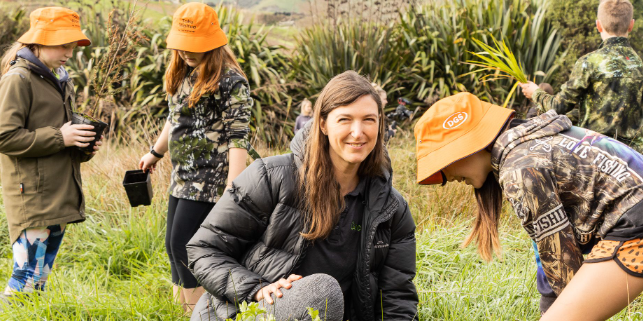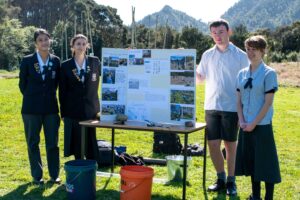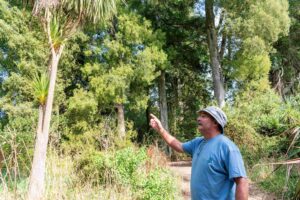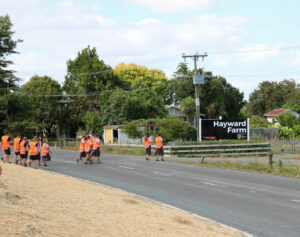Dairy farmers, sheep and beef farmers, iwi and other community members are working together to create an ecological corridor in the Waikato and have high aspirations for 2024.
The Taiea te Taiao project will link Maungatautari and Mt Pirongia by planting along the Mangapiko Stream and its tributaries, on farms and other properties. A wide range of other environmental work is also underway, including restoring wetlands and predator control.
“A key goal is to create stepping stones along the corridor that provide attractive stopping points for native birds and bats to rest and feed, mostly by planting trees. This will help increase wildlife numbers and biodiversity,” project co-ordinator Bexie Towle said.
The mountains are more than 40km apart, so the whole community is involved.
Dairy farmer Bush Macky said it was a fabulous project at the heart of the community. “It’s so rewarding working with the hundreds of people and more than 20 organisations involved, including DairyNZ and dairy companies, to help native wildlife thrive and enhance local waterways.”
Key project goals for 2024 include researching native trees and plants unique to the area that have disappeared due to predators like possums and creating a plan to bring them back in the long term. A similar initiative has been launched by DOC, with the support of local iwi, hapū, and the community, to reintroduce tāpia/mistletoe on Mt Pirongia.
In other project goals, iwi will work to enhance treasure species within the corridor including freshwater mussels and lamprey.

On his dairy farm at the Mt Pirongia end of the corridor, Bush has planted more than 15,000 native trees and plants. He created a duck pond surrounded by planting and retired some land from farming. Bush says there’s been no loss in farm production and no impact on business viability.
“It’s a win-win. We’ve added value to the community and our property. We’re seeing more native birds on our farm than ever before,” he said.
So far, more than 200,000 plants have been added to the corridor. Nine kilometres of waterways have been fenced to protect them and native trees planted alongside.
The corridor planting is regularly maintained, with weed control across 22 hectares. A comprehensive pest management programme includes trap lines and bait station networks on both maunga, and traps on private property.
Four iwi are closely involved in the project: Ngāti Apakura including Pūrekireki Marae, Te Ruranga o Ngāti Apakura, Ngāti Korokī Kahukura and Ngāti Hikairo. Nine tohu whenua/Māori heritage sites including pā, lie along the Mangapiko Stream, signifying the relationships between nature and people who once lived between the two maunga.
Clare St Pierre, co-chair of the Maungatautari to Pirongia Ecological Corridor Incorporated Society, said it was amazing to be creating biodiversity strongholds for birds. “We’re providing an environment for our iconic species so people can see them on their back doorstep.”
More than 20 organisations are involved in the Taiea te Taiao project including funders, sponsors and supporters. The Ministry for the Environment provides funding through the Freshwater Initiatives Fund for two employees, and NZ Landcare Trust co-ordinates the project.
Industry organisation DairyNZ supports farmers in their work to reduce environmental footprint and organises on-farm fieldays for the project.
Fonterra, Nestlé and Open Country Dairy contribute funding to the project, and the dairy companies support their farmers with on-farm environmental work.




